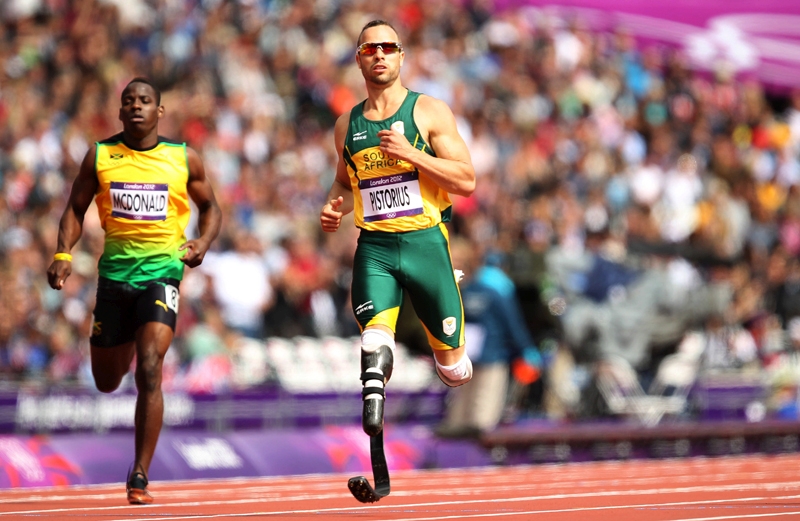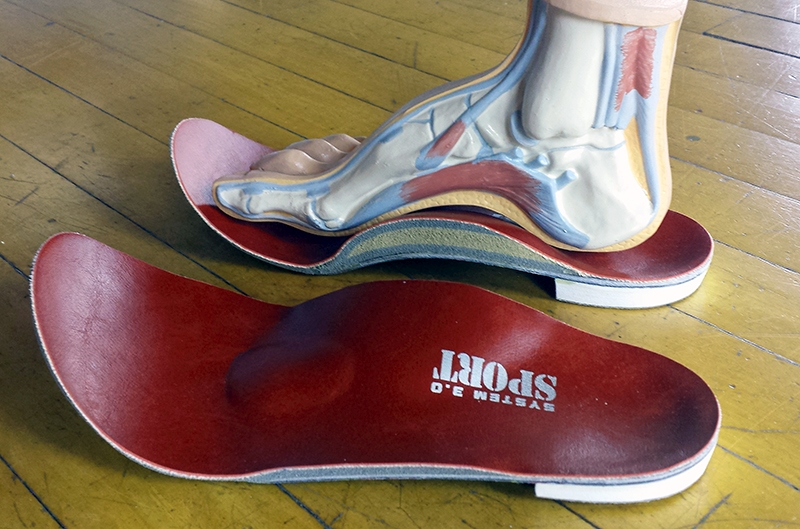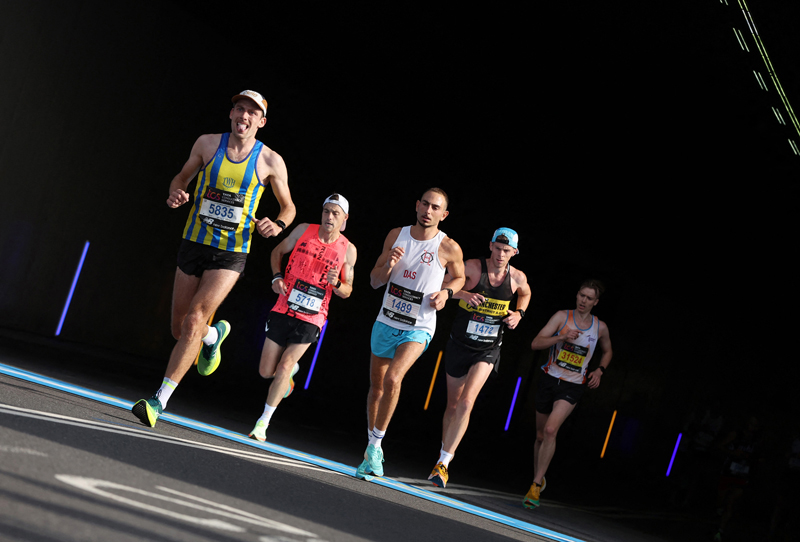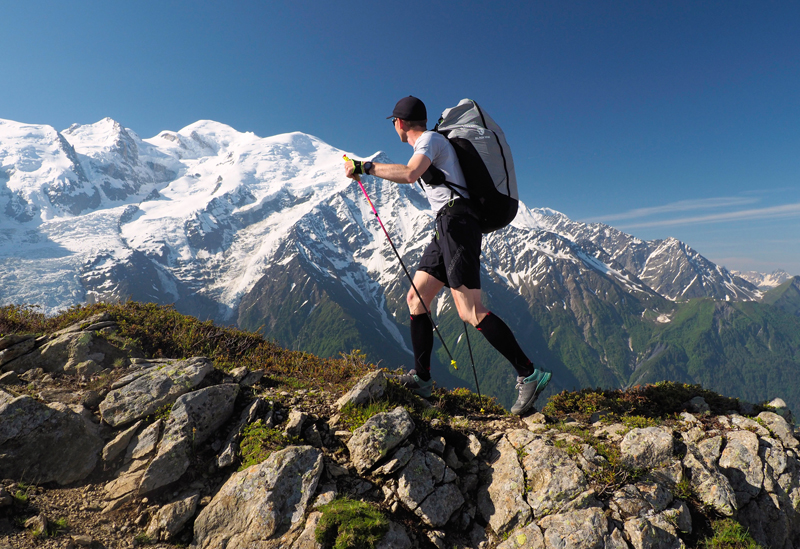You are viewing 1 of your 1 free articles. For unlimited access take a risk-free trial
Roll away the foam: the truth about foam rolling for athletes

Andrew Hamilton looks at recent research on foam rolling. How effective is it for athletes and what are the most effective techniques for its implementation?
The use of foam rollers to provide tissue massage has become very popular in recent years. Advocates for foam rolling cite a number of potential benefits for its use. These include improved joint mobility and flexibility, enhanced recovery following intensive exercise where delayed onset muscle soreness (DOMS), a reduction in injury-related pain, and a reduction in fascial (connective) tissue stiffness (NB – myofascial tissues is a type of thin, strong, fibrous connective tissue made up of collagen and elastin fibers, which extends throughout the body to provide support and protection to muscles and bones). There’s even some suggestion that regular foam rolling could enhance muscle force generation and by doing so, improve athletic performance. In this article, we will look at the most recent evidence to support (or otherwise) these claims, and the most effective implementation protocols for foam rolling.Foam rollers come in several sizes and densities. Commercial foam rollers are typically available in two lengths: 36 inches and 18 inches(1). The structure of foam rollers vary from a mild density foam to a more rigid and solid plastic cylinder with a dense foam outer covering. Although researchers have demonstrated that higher density foam rollers can produce more pressure on the target tissues than softer density foam rollers(2), the downside is that athletes using them may find hard foam rollers too uncomfortable to use so a compromise may be needed. The foam rolling surface may also vary from smooth to textured, through to ‘knobbly’. To date, there’s little scientific evidence as to which surface type may be most effective; however, the ‘GRID’ foam roller (see figure 1) has been used in previous studies in this area with positive results(3,4).
Figure 1: A ‘GRID’ foam roller

Questions, questions
The practice of foam rolling has only really become popular in the last decade or so. And while studies have reported various beneficial results from a foam-rolling programme, there remain a number of questions to be resolved. Examples of these questions include:- How effective is foam rolling for increasing joint range of movement (ROM)?
- Can foam rolling techniques be effectively self taught?
- Which types of rollers are most efficient?
- Is foam rolling an effective technique for myofascial tissue release?
Foam rolling and ROM
Many studies have investigated how stretching affects range of motion and performance. In general, these results showed increased ROM following a stretching programme but with (in the short term) an impairment in subsequent performance – an undesirable outcome for an athlete who is seeking to improve joint flexibility in readiness for competition or training(5,6).More recently, the use of foam rolling has been advocated as an alternative to stretching. In a study that have examined how a foam roller affects flexibility, researchers reported 12.7% and 10.3% increases in knee-joint ROM at two minutes and ten minutes respectively, following two 1-minute bouts of foam rolling(7). In another study, researchers found that compared with no foam rolling, quadriceps ROM was 11% and 9% greater at 48 hours and 72 hours, respectively after treating exercise-induced muscle damage (EIMD) with a foam roller (see figure 2)(8). In the same study, hamstring flexibility at 72 hours post foam rolling was 3% greater.
Figure 2: Improvements in range of movement following foam rolling(8)

In a study in which roller massagers (hand-held rollers applied to the muscles with force applied by the user rather than using bodyweight – see figure 3), researchers demonstrated a 4.3% increase in ‘sit-and-reach’ ROM with 5 and 10 seconds of roller-massager application(9). Although not significant, they found a trend for 10 seconds of roller massaging to increase ROM more than 5 seconds. Importantly – and contrary to most static-stretching studies involving prolonged durations – all three of these studies reported either no subsequent reduction in voluntary force or activation, or a much lesser degree of impairment.
Figure 3: Roller massager

Another study looked at the effects of roller massaging on knee ROM and neuromuscular efficiency during the lunge exercise(10). Ten recreationally active participants performed three randomised experimental trials on three separate occasions:
- Five repetitions of 20 seconds of roller massaging to the quadriceps.
- Five repetitions of 60 seconds.
- A control condition in which participants sat quietly.
- Knee-joint ROM was 10% and 16% greater than the control condition in the 20-second and 60-second roller-massager conditions, respectively.
- A roller massager applied to the quadriceps at a load equal to 25% of body mass was moderately painful and induced minor contractions as measured by (EMG).
More evidence
Further studies also provide credibility to the notion that both foam rolling and roller massaging can aid in improving range of motion. For example, in a study on 40 subjects with less than 90 degrees of passive hip-flexion ROM, researchers compared the effects of foam rolling and static stretching on range of motion(11). During each of trial sessions, subjects' passive hip-flexion ROM was measured before and immediately after the following:- Static stretching only
- Static stretching combined with foam rolling
- Foam rolling only
- Nothing (control)
Another study compared the effects of static stretches and self-administered roller massaging of the calf muscles on ankle ROM, maximal voluntary contraction (MVC), force F100 (force produced in the first 100ms of the MVC), electromyography (EMG of soleus and tibialis anterior) the characteristics of the plantar flexors, and a single limb balance test in 14 recreationally trained subjects(12).
After a warm up, subjects were assessed for passive dorsiflexion ROM, MVC, and a single-limb balance test with eyes closed. Following the pre-test, participants randomly performed either static stretches or roller massaging (three 3 sets of 30 seconds, with ten seconds of rest between each set). Both roller massage and static stretching increased ROM immediately and 10 min after the interventions. However, when maximum voluntary contraction was also assessed after 10 minutes, the self-massage with a roller massager led to significant improvements in MVC force compared to stretching.
Which foam roller?
Readers will have noticed that both foam rollers and roller massagers have been shown to produce beneficial effects in studies. This begs the question as to which type might be more effective. A 2017 study compared the effects on flexibility of foam rolling vs. roller massaging of the hamstrings(13). In particular, the researchers sought to establish whether foam rollers and roller massagers were equally effective for increasing hamstrings flexibility in asymptomatic physically active adults. Looking at data from previous studies on foam rolling and roller massaging, four studies were analysed – two using roller massagers and two using foam rollers.Both of the roller-massager studies reported significant increases in hamstrings flexibility after treatment. Meanwhile, the data from the foam-roller studies did not seem to demonstrate a statistically significant increase in hamstring flexibility, although one of the two studies did demonstrate a strong effect that nearly reached significance. The authors concluded that moderate-quality studies support the use of roller massagers but provide limited evidence on the effectiveness of foam rolling to increase hamstring flexibility. They suggested that the superior result observe in the roller massaging studies was likely due to a longer a longer duration of treatment and administration by a trained therapist rather than any mechanical effect of the rollers themselves.
The results from the study above seem to hint that for the best outcome, the application of a roller (foam or massager) is best carried out by a trained therapist. However, a study also published the same year suggests that this is not necessarily the case. In this study, researchers set out to compare the effects of video-guided, live instructed, and self-guided foam rolling interventions on knee flexion ROM and pressure pain thresholds in 45 adults(3).Subjects were recruited and randomly allocated to one of three intervention groups (see box 1):
- Video-guided
- Live-instructed
- Self-guided
Box 1: Methods of instruction(3)
- For the video-guided intervention, subjects followed an instructional video that demonstrated the use of the foam roll on the left quadriceps muscle group. Subjects had their own foam roll and followed the investigator. The instructor in the video provided a brief introduction and then discussed the foam rolling technique.
- For the live-instruction intervention, subjects followed the examiner’s instructions, which were the same as the video-guided intervention. The video was transcribed into a text-based script that the examiner followed while teaching the foam rolling technique. The examiner began by demonstrating the foam-rolling sequence then had the subject perform the two-minute sequence of rolling and knee bends.
- For the self-guided or control intervention, the primary investigator demonstrated the plank position and placement of the roller under the left quadriceps group. Subjects performed their own preferred method of foam rolling on the left leg for two minutes. The investigator monitored the intervention time and did not provide any feedback.
Vibrating rollers
Finally, it’s worth mentioning a new type of foam roller, which has recently appeared on the market. Recently, manufacturers have combined technology of vibration therapy with foam rolling – and come up with the development of vibrating foam rollers. But are they more effective? Until recently, there were no peer-reviewed investigations on this technology. However, another 2017 study looked at the effects of a vibrating roller and non-vibrating roller intervention on prone knee flexion passive range of motion (ROM) and pressure pain thresholds (PPT) of the quadriceps musculature(14). Forty-five recreationally active adults were randomly allocated to one of three groups:- Vibrating roller
- Non-vibrating roller
- Control
Summary and practical advice
Recent studies do seem to confirm that foam rolling and roller massaging are capable of improving joint ROM across a number of joints – ie are likely to be beneficial for athletes. The benefits obtained are equivalent or superior to static stretching, but without the acute performance drawbacks of the latter. Foam rolling can be successfully used by athletes in their home, providing instruction is given – either verbal, video or self-guided. Athletes who are new to foam rolling should seek advice and guidance from a coach, trainer or physiotherapist on how best to get started. There are also a number of excellent tutorial videos online – for example, those by the Mayo Clinic (click the link below).
There are no universally agreed guidelines about the time, reps or pressure needed during rolling to exert the most beneficial effect. However, studies in the scientific literature typically have employed protocols such as 20-30 rolls per minute, using three sets of 30 seconds of foam rolling, with 30 seconds of rest between each set(15). Finally, vibrating rollers may give additional benefits in terms of pain tolerance during foam rolling, but more research is needed to confirm this.
References
- J Bodyw Mov Ther. 2015;19(4):747-758
- J Sport Rehabil. 2008;17(4):432-442
- Int J Sports Phys Ther 2017; (12)2 242-249
- Int J Sports Phys Ther. 2015;10(2):203-212
- Eur J Appl Physiol. 2011; 111(11):2633–2651
- Med Sci Sports Exerc. 2012;44(1):154–164
- J Strength Cond Res. 2013;27(3):812–821
- Med Sci Sports Exerc. 2014;46(1):131–142
- Int J Sports Phys Ther. 2013;8(3):228–236
- J Athl Train 2015;50(2):133–140
- J Sport Rehabil. 2014 Nov;23(4):296-9
- Int J Sports Phys Ther. 2014 Feb;9(1):92-102
- J Sport Rehabil. 2017 Jan;26(1):94-100
- J Sport Rehabil. 2017 Aug 8:1-23
- Int J Sports Phys Ther. 2018 Aug; 13(4): 652–660
Newsletter Sign Up
Testimonials
Dr. Alexandra Fandetti-Robin, Back & Body Chiropractic
Elspeth Cowell MSCh DpodM SRCh HCPC reg
William Hunter, Nuffield Health
Newsletter Sign Up
Coaches Testimonials
Dr. Alexandra Fandetti-Robin, Back & Body Chiropractic
Elspeth Cowell MSCh DpodM SRCh HCPC reg
William Hunter, Nuffield Health
Keep up with latest sports science research and apply it to maximize performance
Today you have the chance to join a group of athletes, and sports coaches/trainers who all have something special in common...
They use the latest research to improve performance for themselves and their clients - both athletes and sports teams - with help from global specialists in the fields of sports science, sports medicine and sports psychology.
They do this by reading Sports Performance Bulletin, an easy-to-digest but serious-minded journal dedicated to high performance sports. SPB offers a wealth of information and insight into the latest research, in an easily-accessible and understood format, along with a wealth of practical recommendations.
*includes 3 coaching manuals
Get Inspired
All the latest techniques and approaches
Sports Performance Bulletin helps dedicated endurance athletes improve their performance. Sense-checking the latest sports science research, and sourcing evidence and case studies to support findings, Sports Performance Bulletin turns proven insights into easily digestible practical advice. Supporting athletes, coaches and professionals who wish to ensure their guidance and programmes are kept right up to date and based on credible science.













